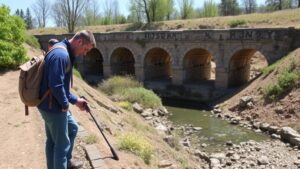Exploring Schoolyards for Hidden Relics and Historic Artifacts
Exploring Schoolyards for Hidden Relics and Historic Artifacts
Schoolyards often present an overlooked realm of historical significance, housing hidden relics and artifacts from various eras. While classically viewed as simple play areas for children, these spaces can tell stories that extend far beyond their everyday usage. This article explores the importance of investigating schoolyards for hidden relics and historic artifacts, providing a comprehensive understanding of the subject matter.
The Historical Context of Schoolyards
To comprehend the potential for discovering historical artifacts, it is essential to understand the historical context of schoolyards. Many schools are built on land that has undergone significant transformation over the years. These spaces may have once served as:
- Colonial settlements
- Farming communities
- Military outposts
- Industrial sites
For example, the Lee Elementary School in Alexandria, Virginia, is located on land that was once part of a Civil War encampment. Archaeological investigations have uncovered buttons, musket balls, and even children’s toys dating back to the 19th century, illustrating the rich historical narratives that can emerge from schoolyard explorations.
The Importance of Archaeological Investigations
Archaeology in schoolyards serves both educational and historical purposes. It is a practical methodology to engage students with their local history while fostering skills in critical thinking and scientific inquiry. Conducting archaeological digs in schoolyards helps students learn methods such as:
- Artifact identification
- Excavation techniques
- Site recording and mapping
An example can be drawn from the Discovery School in Minneapolis, Minnesota, where a student-led excavation project resulted in the discovery of artifacts from the early 20th century, including glass bottles and ceramic shards. This project not only enhanced students’ understanding of their community’s history but also contributed valuable data to local historical records.
Methodologies for Discovering Artifacts
Several methodologies can be employed to conduct artifact exploration in schoolyards effectively. Here are some key techniques:
- Surveying: This method involves systematically inspecting the surface of an area for visible artifacts. A grid can be established to ensure thorough coverage.
- Shovel Testing: This involves digging small, systematic holes to a certain depth in various locations. The soil can then be examined for artifacts.
- Geophysical Surveying: Technologies such as ground-penetrating radar (GPR) can identify subsurface anomalies that may indicate buried artifacts.
For example, at Oak Hill School in Houston, Texas, geophysical surveying unveiled an underground storage area that was once part of a slave quarter, prompting a deeper investigation and resulting in newly uncovered historical insights.
Legal and Ethical Considerations
Engaging in archaeological exploration within schoolyards must be approached with caution. Legal frameworks often regulate archaeological work to protect cultural heritage. Permits may be required, and it is crucial to obtain authorization from local authorities and school administrations before commencing any investigative activities. Plus, ethical considerations include:
- Respecting the site and its historical context
- Ensuring community involvement and education
- Preserving artifacts through proper conservation methods
Incorporating history education within the excavation process fosters appreciation for cultural heritage and instills a sense of responsibility among students regarding preservation.
Engaging Students and the Community
Engaging students and the broader community in the exploration of schoolyards can create a powerful connection to local history. Programs that invite families and community members to participate can enhance findings and promote collaborative learning. Examples include:
- Community archaeology days where families can join in the digs
- Workshops that teach artifact preservation techniques
- Presentations of findings to school boards or local historical societies
A notable case is the “Archaeologists in the Classroom” program in Ontario, Canada, where students collaborated with local archaeologists to uncover the history of their school site. This initiative resulted in a documentary film showcasing their experiences and findings, enriching both educational and community ties.
Actionable Takeaways
Exploring schoolyards for hidden relics and historical artifacts provides ample opportunity to connect students with their local past. To initiate such an exploration, consider the following steps:
- Research the historical background of your school and its surroundings.
- Engage with local historians or archaeologists to discuss possible investigations.
- Involve students and the school community in the planning process.
- Ensure all necessary permits and ethical guidelines are followed.
By exploring schoolyards, we unlock the potential to learn from the rich tapestry of history lying just beneath our feet, fostering curiosity and respect for the past in future generations.


